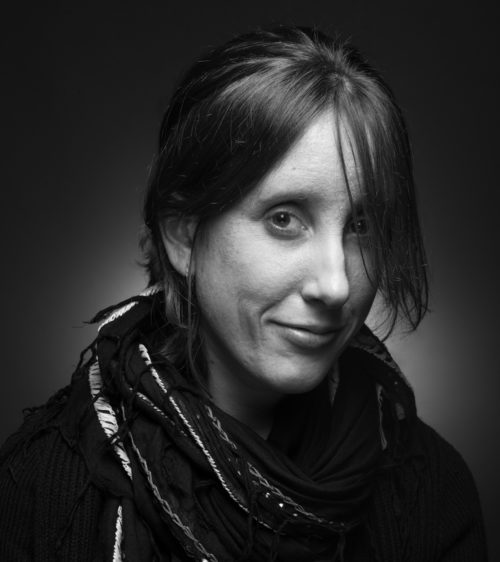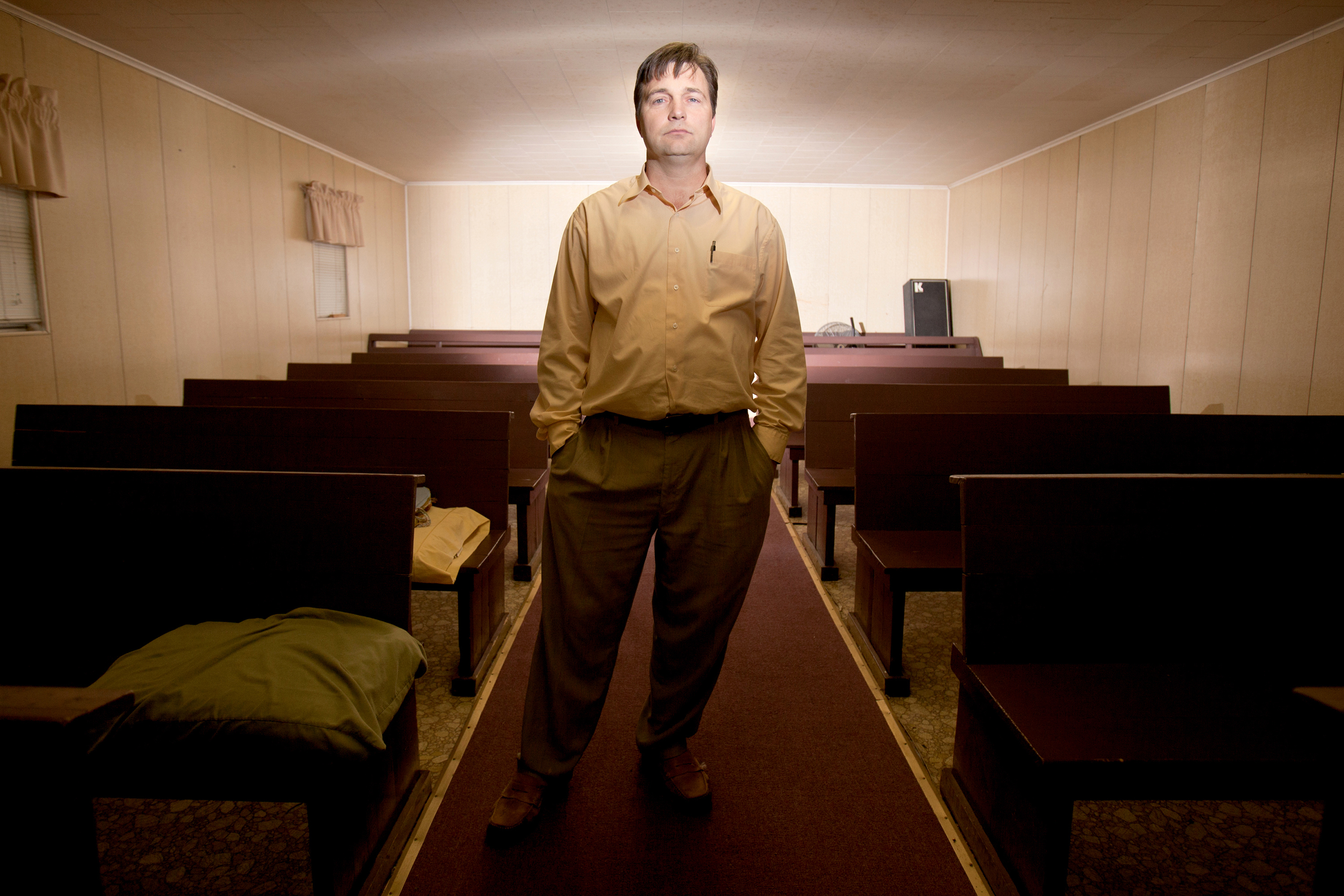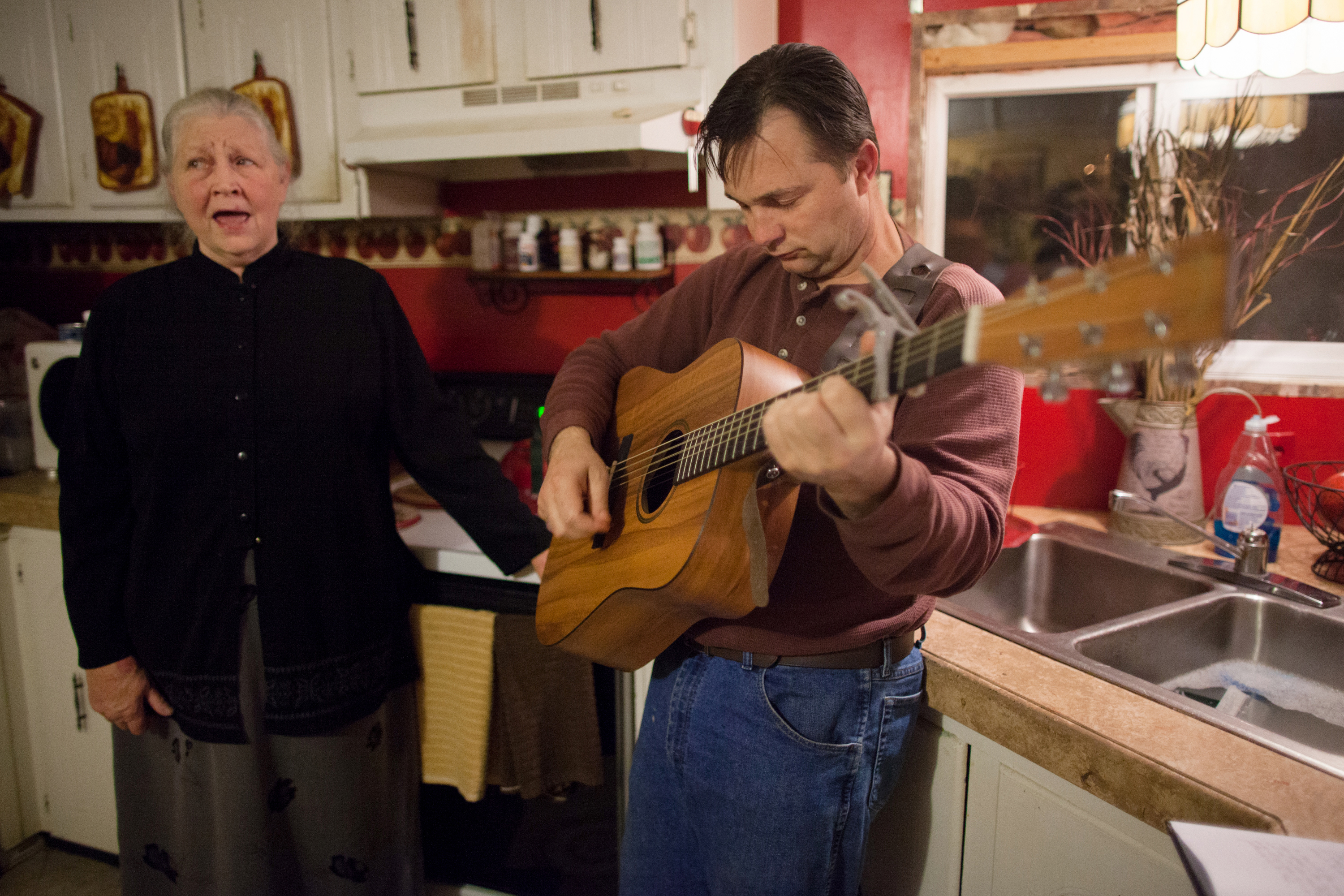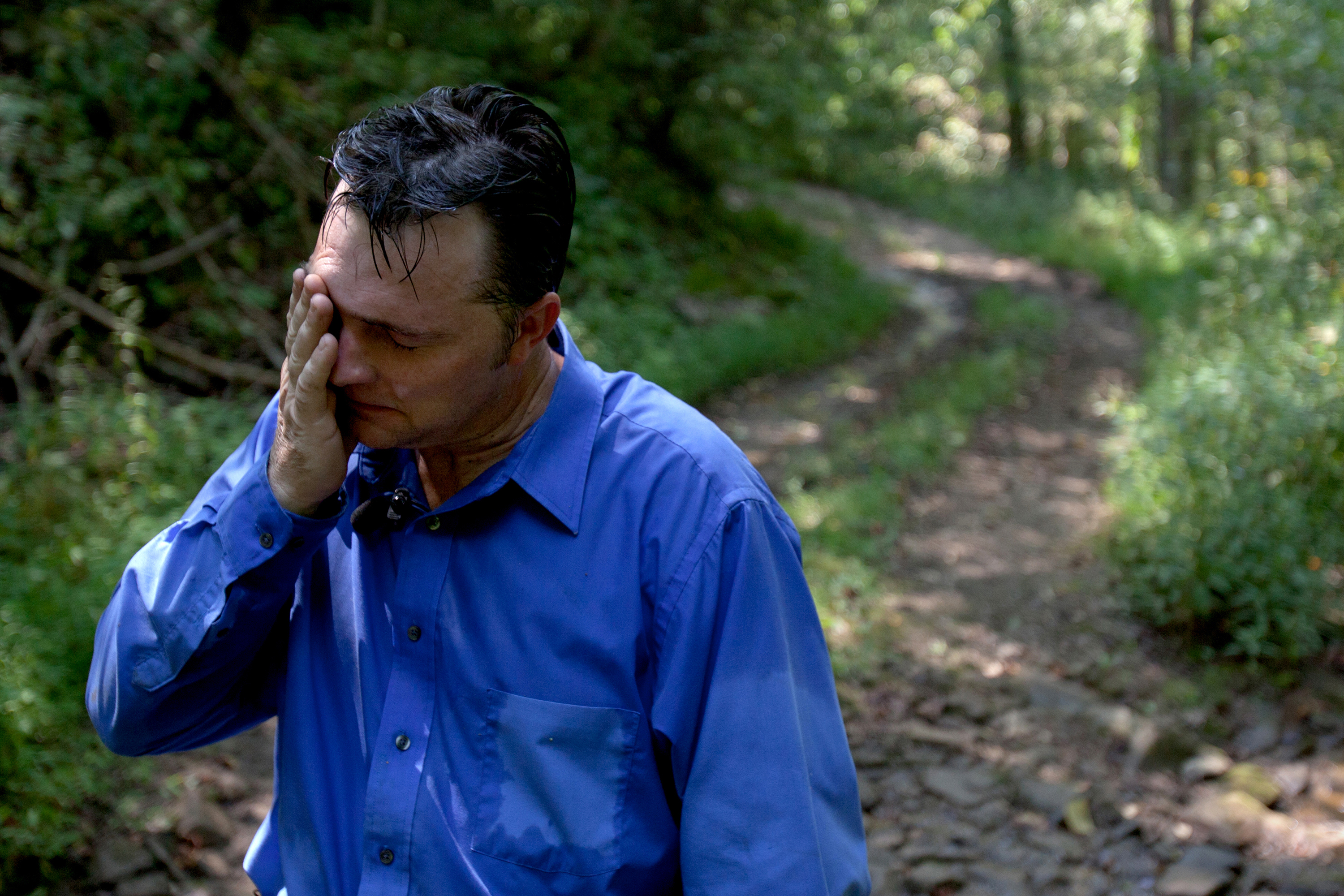Perhaps the most common take on the media’s coverage of the 2016 election was that mainstream reporters huddled in an echo chamber of coastal enlightenment and, in their insularity, got everything wrong.
Reading the same press releases, speaking the same lingua franca, parroting the same talking points, they connected with each other and their own elite base of enlightened rationalists, reducing the flyover states to pat stereotypes rather than achieving boots-on-the-ground insights. Self-assured in their reporting, confident in their portrayal of Donald Trump supporters as politically insignificant, and unquestioning of the polls that confirmed Hillary Clinton’s overwhelming odds for a historic victory, journalists—and those of us who refused to doubt them—woke up on November 9th, 2016, as disoriented and shocked as ever.

Dozens of factors contributed to this situation, but at the top of the list was a fundamental failure to understand the worldview of those who might be culturally different. In the case of the election, we are talking mostly about white families living in the South and nurturing a worldview that distrusts academic expertise, the government, the New York Times, Radiohead, NPR, anything to come out of Brooklyn, and other such “progressive” manifestations of modern life.
Over and over again, members of the media could only correctly observe how this anxiety-laden demographic voted against its own economic interests (Thomas Frank’s What’s the Matter With Kansas? dilemma). But very few reporters delved beneath this phenomenon of irrationality to explore the religious and cultural mechanisms that might illuminate it. It’s much easier, it seems, to write these folks off as ignoramuses blinded by anger than to understand the deeper roots of their cultural disposition (and self-dispossession).
What’s required to address this problem is something that most newsrooms covering daily stories cannot adequately provide: a detached and ethnographic approach to in-depth journalistic research. Fortunately, a transition to this style of reportage is happening in other investigative realms.
The field of anthropology, for one, has become more attentive to current events than ever before. Today, younger anthropologists are less likely to learn Burmese and study the symbolic complexity of the cockfight than they are to explore the inner appeal of Trump to the evangelical mindset. In a similar vein, more and more photographers are exploring cultural peripheral communities in an effort to see a foreign worldview from the inside out. Some of the best recent work in photojournalism, for example, has focused on online meet-up groups, race and mass incarceration, communities terrorized by Boko Haram, and, most recently, religious snake handlers.
To think that we might find viable alternatives to the fast-paced echo chamber approach to today’s journalism might seem far fetched, but a closer look at one example demonstrates why it may not be a bad idea to consider the possibility.

In November of 2017, Duke University Press will publish Test of Faith, a book of photographs by the 31-year-old Ohio photographer Lauren Pond. The volume has already generated buzz, having won the Center for Documentary Studies/Honickman First Book Prize in Photography.

(Photo: Lauren Pond)
The subject matter—religious snake handlers, also called Signs Followers—lends itself to obvious voyeuristic indulgence. Likewise, the fatal rattlesnake bite that killed famed Pentecostal snake handler James Coots in 2014 (he of the National Geographic Channel show) further intensifies the impulse to gawk at these seemingly possessed cult mongers. There is, in the extremity of behavior and belief, probably no subculture more remote or inaccessible to the mainstream media’s enlightened TED-talk mentality than an Appalachian Pentecostal community. The initial impulse is, naturally, to mock these herpetological heretics.
The theology, moreover, is fiercely literal. Signs Followers fundamentally interpret Mark 16:17-18: “And these signs will accompany those who believe: In my name they will drive out demons; they will speak in new tongues; they will pick up snakes with their hands; and when they drink deadly poison, it will not hurt them at all; they will place their hands on sick people, and they will get well.” Signs Followers consider a snake bite to be an essential test of faith and, as such, refuse medical treatment when it happens (around 75 preachers died from snakebite in the 20th century; scores have survived). To die under such a condition, as practitioners see it, is to die with dignity and faith.
The most common outside reaction to the snake handlers’ ideology is to dismiss it entirely. It’s an understandable take, but it’s also an easy one. Pond, who started taking photographs of serpent handling in 2011, assumed a decidedly more difficult approach: she stripped away the predictable presuppositions, took seriously the Pentecostal brand of worship, and worked to understand snake handlers as snake handlers. But not only that: She aimed to present them as human beings as well, real people with complex systems of belief that, in the depth of their faith, deserved to be understood.
After learning more about Pond through a phone interview and several email exchanges, it became clear that her mission was to do more than lend meaningful insight into an elusive and exotic religious practice (although she does this remarkably well). It was also to provide a model of journalistic integrity that might, in its quest to grasp a radically alien practice, better help us respect cultures we too often reduce to caricature. Pond chose empathy and tolerance. And it shows in the amazingly nuanced portrayal of her subjects.

Pond grew up in Southern California before moving to the Chicago area, to attend Northwestern University, where she started taking photos for the school newspaper, the Daily Northwestern. She says that, as an undergraduate photojournalist, she “came to appreciate photography as a form of storytelling, in addition to writing.” In 2010, after college, she took an anthropology class that introduced her to the Appalachian practice of serpent handling—something of which she had never before heard.
“That planted the seed in my mind,” she says. A few months later, curious to witness a snake handling firsthand, she traveled to Jolo, West Virginia, a town known for the practice (which is legal in West Virginia, but nowhere else). There she met the pastor Mack Wolford, a widely regarded, friendly faced snake-handling minister whose father, also a minister, died of a snakebite in 1984. Wolford, who welcomed media attention as a way to share his faith, accepted Pond (and her camera) into his church. Regarding their early interaction, Pond says: “It was not a deep friendship at first. I was more of an acquaintance.”

(Photo: Lauren Pond)
But that soon changed. Pond attended several services, eventually becoming less shocked by the novelty of men and women hopping around with snakes threaded through their fingers, around their necks, encircling their arms. She kept her distance from the serpents but settled in enough to wonder about these peoples’ lives beyond the exceptional experience of the church. “I went to a number of more formal services,” Pond says, “and then I asked [Mack] if I could come visit him and his wife, Fran.” She adds, “I think Mack appreciated that I was interested in his life outside of church.”
Over time, Pond became quite close to the Wolfords. “They know that I care a lot about them,” she says, “and they care a lot about me.” About Mack, specifically, she says, he became “a friend and a teacher.”
Then came tragedy. In May of 2012, Wolford, who had just turned 44, was bitten on the leg by a rattlesnake during an outdoor service. Pond watched the incident with horror. She remembers seeing Wolford, as part of his worship, prepare to walk on the rattlesnake (“they do this,” she says—see the 10th photo in her slideshow—noting that it, too, is a literal interpretation of the Bible). Then the snake struck. Along with two videographers, Pond followed the preacher and his family to his mother-in-law’s house, where Mack was placed on a sofa (serpent handlers generally do not seek medical attention when bitten while preaching, placing faith in God). A few hours later he passed away. “Camera in hand,” she wrote in the Washington Post, “I watched as the man I’d photographed and gotten to know over the past year writhed, turned pale and slipped away, a victim of his unwavering faith, but also a testament to it.”
Pond agonized over her decision to not seek medical assistance, which would almost surely have saved Mack’s life. In an email, she writes: “Although I still feel that it would have been a violation of Mack’s and his family’s wishes to have intervened, I think I also just felt guilty for having passively watched him die.” She adds: “It was awful to watch someone suffer like that. I’ve never felt so powerless.”
But at the same time, her willingness to listen to the tenets of her friends’ faith, and take that faith seriously (even if she did not share it), led her to realize that “perhaps he wanted me to witness his incredible display of conviction, so that I could share with the world a side of his faith that few have gotten to see.”
What happened in the wake of the tragedy was, Pond concedes, a definite mistake. When Mack was dying on the living room sofa, his family removed some of his clothes because of the heat. They asked Pond, and the videographers, out of respect, not to photograph Mack with his shirt off (Pentecostals do not want to be seen as a fleshy person before God). However, as Pond recalls, “trying to be respectful of the family’s wishes while also continuing to tell the story and document this part of the faith,” she shot a few photographs, some of which captured parts of the pastor’s back.
After Mack’s death, she says, “I got sucked into a cycle of media pressure.” False stories and disrespectful comments were circulating all over the media. Stories were being published “by people who had little knowledge of what had happened,” Pond recalls. “I felt like I had to share what I had witnessed to help humanize the situation.” Editors approached her and urged her to publish the photos, perhaps with a personal essay, to clarify what happened. Pond agreed, failing to appreciate how fundamental modesty is to the Signs Followers culture, much less how the photos, two of which included Mack’s back, would affect the family.

(Photo: Lauren Pond)
They were deeply hurt. Pond regretted the decision and, due to the pain she caused them, more or less assumed that her relationship with the Wolfords was over. “After Mack died,” she says, “I honestly thought that was the end of my work.” The idea that the family might forgive her was remote at best. “Because I did not have a strong religious upbringing,” she says, “the concept of forgiveness is not something very familiar to me.”
But the Wolfords forgave Pond and invited her back into their lives. That forgiveness, she notes, “helped me heal, and, in turn, has really taught me about who they are as people, and what their faith is really about.”
It was then, in the warmth and humility of forgiveness, that her project bloomed: “I gradually realized that my work could be a book—about Mack and serpent handling, yes, but also about his family and about forgiveness and redemption, which are important to them and their faith.” She now knows, as a result of her professional personal interaction with the Wolfords, that “the camera does not have to be just a tool for documentation, but can serve as a tool for greater intercultural dialogue and understanding.”

In the wake of Trump’s election, as well as the emergence of “fake news,” the media that so badly botched its coverage of the American electorate has made at least rhetorical efforts to broaden its cultural horizons and double down on the accuracy of its reporting. NPR has lately been talking about providing “reliable and thoughtful spaces” for “important conversations” while remaining a go-to outlet for fact-based reporting.”
Space and facts are fine and good, as are decent conversations. But Lauren Pond’s work suggests that the art of grasping genuine cultural difference—something that’s essential to effective reporting on the American electorate—demands so much more. It asks us to shed our preconceptions, enter strange communities in a spirit of tolerance and humility, interact with genuine respect and curiosity, and earn the trust of our subjects. It asks us, in other words, to do so much more than conventional journalism currently asks us to do.





